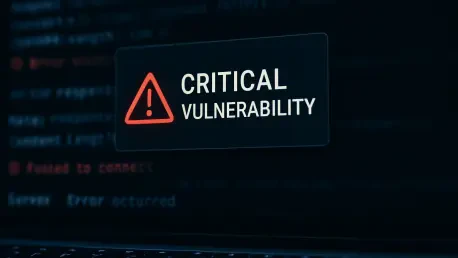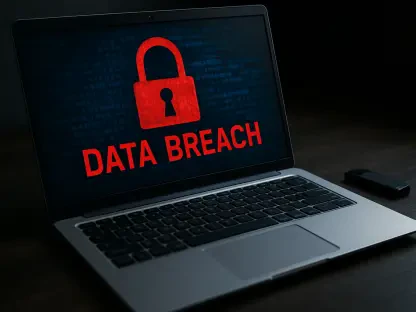Imagine a sprawling enterprise network, humming with activity, where every transaction and interaction is monitored by a trusted security platform—until a hidden flaw turns that protector into a potential gateway for chaos. This is the alarming reality facing users of FortiSIEM, a widely adopted security information and event management solution from Fortinet. A critical vulnerability, recently identified, has sent shockwaves through the cybersecurity community, raising urgent questions about the safety of enterprise environments. This review delves into the specifics of the flaw, evaluates its implications, and assesses how FortiSIEM holds up under this severe threat.
Technical Overview of FortiSIEM
FortiSIEM stands as a cornerstone for medium to large enterprises and managed service providers, offering robust capabilities for threat detection, incident response, and real-time monitoring. The platform integrates data from diverse sources, correlating events to uncover potential security risks before they escalate. Its appeal lies in a comprehensive approach to managing complex network environments, making it a go-to solution for organizations prioritizing operational security.
Beyond basic monitoring, FortiSIEM provides advanced analytics and automation features that streamline incident handling. This functionality is critical for environments with high data volumes, where manual oversight would be impractical. However, the recent discovery of a severe security flaw has cast a shadow over these strengths, prompting a closer examination of the platform’s resilience against emerging threats.
Dissecting the Critical Vulnerability: CVE-2025-25256
Nature and Severity of the Flaw
At the heart of this crisis is CVE-2025-25256, a vulnerability with a staggering CVSS score of 9.8, signaling near-maximum severity. This escalation of privilege issue allows unauthenticated attackers to execute unauthorized code or commands through carefully crafted CLI requests. Such a flaw essentially opens the door to full system compromise without requiring any initial access credentials.
The implications of this vulnerability are profound, as it bypasses fundamental security barriers. Attackers exploiting this gap could gain control over critical systems, potentially disrupting operations or extracting sensitive data. For a platform designed to safeguard networks, this represents a catastrophic breach of trust and functionality.
Detection Challenges
Compounding the issue is the absence of clear indicators of compromise associated with the exploit code already circulating in the wild. Network defenders face significant hurdles in identifying whether their systems have been breached, as traditional detection methods may fail to flag malicious activity tied to this flaw. This invisibility heightens the risk, leaving organizations vulnerable for extended periods.
Moreover, the lack of distinct signatures for the exploit complicates the deployment of automated defenses. Security teams must rely on indirect signs, such as unusual network behavior, which are often ambiguous and resource-intensive to analyze. This gap in visibility underscores a critical weakness in FortiSIEM’s current state under this threat.
Attack Trends Targeting Fortinet Ecosystem
Recent reports highlight a troubling surge in malicious activity aimed at Fortinet products, with FortiSIEM being just one piece of a broader target landscape. A notable spike in brute-force attacks on Fortinet SSL VPNs, involving over 780 unique IP addresses since early August of this year, marks a significant escalation. This activity reflects a deliberate focus by threat actors on penetrating Fortinet infrastructure.
Additionally, a shift in attack patterns has been observed, with perpetrators moving from SSL VPN endpoints to FortiManager’s FGFM service within days. Such trends often precede the public disclosure of new vulnerabilities, suggesting that attackers may be probing for weaknesses ahead of widespread awareness. This persistent targeting reveals the high value cybercriminals place on breaching Fortinet systems.
The convergence of these attack waves with the critical vulnerability in FortiSIEM paints a dire picture. Enterprises face not only isolated exploits but also coordinated campaigns that leverage multiple entry points. This multifaceted threat environment demands a reassessment of how Fortinet solutions are secured against determined adversaries.
Real-World Impact on Enterprises
For organizations relying on FortiSIEM, the stakes could not be higher. The potential for full system compromise translates into risks of devastating cyberattacks, including ransomware deployments that could paralyze operations. With exploit code accessible to malicious actors, the window for preemptive action is alarmingly narrow.
Sectors such as finance, healthcare, and critical infrastructure are particularly exposed due to their dependence on uninterrupted network security. A breach facilitated by this vulnerability could lead to massive data leaks or service outages, eroding customer trust and incurring steep regulatory penalties. These real-world consequences highlight the urgency of addressing the flaw.
Beyond immediate damage, the ripple effects include reputational harm and long-term operational challenges. Enterprises may need to overhaul their security strategies, diverting resources from innovation to damage control. This vulnerability thus poses not just a technical problem but a strategic one for affected entities.
Mitigation Efforts and Ongoing Challenges
Addressing CVE-2025-25256 presents formidable obstacles, starting with the difficulty of detecting exploitation in the absence of clear markers. Security teams must act swiftly despite limited visibility, a task that strains even well-resourced organizations. The urgency to apply patches is paramount, yet deployment across large networks often encounters logistical delays.
Fortinet has issued guidance emphasizing immediate updates to affected systems and heightened monitoring for anomalous activity. These measures, while essential, place additional burdens on IT staff already grappling with daily threats. The balance between rapid response and maintaining operational stability is a delicate one for many enterprises.
Looking broadly, the incident exposes systemic challenges in securing widely adopted cybersecurity tools. As platforms like FortiSIEM become integral to enterprise defenses, they also become prime targets for exploitation. This dynamic necessitates a shift toward more proactive and adaptive security postures across the industry.
Long-Term Outlook for FortiSIEM Security
The emergence of this critical flaw raises questions about the future trajectory of FortiSIEM and Fortinet’s broader ecosystem. While the platform’s core capabilities remain valuable, sustained trust will depend on rapid enhancements to vulnerability management and exploit detection. Fortinet must prioritize closing such gaps to prevent recurring crises.
Industry-wide, this incident could spur improvements in how SIEM platforms are designed and maintained. There is a pressing need for built-in mechanisms that better identify and neutralize stealthy exploits. Over the next few years, from this year to 2027, expect a push for faster patch cycles and more robust security architectures in response to these evolving threats.
Ultimately, the resolution of this vulnerability may shape perceptions of Fortinet’s commitment to customer safety. If handled effectively, it could reinforce the brand as a leader in adaptive cybersecurity. Conversely, prolonged exposure to such risks might drive some users to explore alternative solutions, reshaping the competitive landscape.
Final Thoughts
Looking back, the review of FortiSIEM under the shadow of CVE-2025-25256 revealed a platform with strong foundational strengths but significant exposure to a critical flaw that demanded immediate action. The severity of the vulnerability, coupled with active exploitation and related attack trends, underscored a pivotal moment for Fortinet and its user base. Performance in core areas like threat monitoring was overshadowed by the urgent need to address this security gap.
Moving forward, organizations are encouraged to implement Fortinet’s recommended patches without delay and invest in advanced monitoring tools to detect subtle signs of compromise. Collaboration with industry peers to share threat intelligence could further bolster defenses against similar vulnerabilities. By taking these steps, enterprises can transform this crisis into an opportunity to strengthen their cybersecurity frameworks for the challenges ahead.









